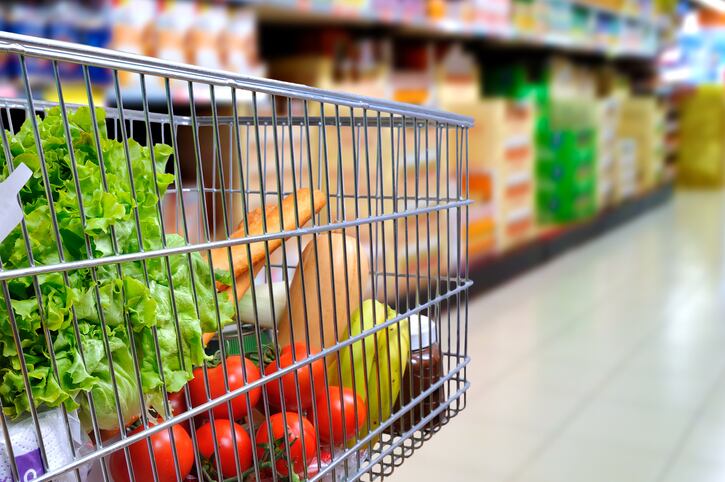Recent analysis from Australia’s Food Environment Dashboard, a new online tool developed by the Deakin University Global Obesity Centre (GLOBE) and the Obesity Policy Coalition, has shown that healthier diets on average cost significantly less than the current diets of most Australians.
The dashboard brought together research from multiple papers published over the past few years for analysis. A healthy diet was defined as that consistent with Australian Dietary Guidelines, and unhealthy foods were defined as discretionary foods according to the guidelines.
In high socioeconomic urban areas, healthier diets were found to be significantly less expensive (18% to 19%) than what consumers are currently eating. This was similar to results from low socioeconomic areas (between 16% and 19%) and even in very remote areas (16% to up to 24%).
But despite the lower costs, the dashboard also found that a majority of consumers are currently spending more on unhealthy food and drinks than healthy items across just about all states and communities. This included Queensland (60% of total food and drink spend is on unhealthy products), Brisbane (58%), Sydney (58%), Canberra (58%), Rural Victoria (60%), Greater Melbourne (60%) and even more so in remote Aboriginal communities (62%).
According to Associate Professor Gary Sacks from GLOBE who was one of the dashboard’s founders, the slow speed of Australian consumers shifting to healthier diets demonstrates that lower costs alone are not a strong enough factor to convince consumers.
“[Although] it may well save people money to switch to healthier diets, there are still several barriers in the way of people selecting a healthier mix of products,” he told FoodNavigator-Asia.
“[Convenience] is a big factor here - unhealthy food is often more convenient than healthier options. The time required to cook a healthy meal is often a barrier – particularly when these days it’s so easy to grab some ready-made unhealthy food.”
As such, one major path forward with major potential for the Australian food industry to drive consumers towards healthier diets would be to focus on ensuring that new healthy food products are developed with not just a focus on health but also a strong emphasis on the convenience factor.
That is not the only factor at play here though – Prof Sacks added that consumer exposure to the many promotions of unhealthy food is also playing a big part in driving their food choices.
“[The other big hurdle is] the heavy promotion of unhealthy food – the dashboard also shows that the marketing of this is pervasive on TV, online, on billboards, and in the supermarket. These are also on promotion twice as often as healthier products, and have much higher level of discounts [which can often drive their prices down too],” he said.
He singled out supermarkets as the entities that would be able to make the most difference in this regard as consumers in Australia are exposed to a lot of these promotions in-store when grocery shopping, and urged supermarkets to place more focus on promoting healthier products.
“In many food categories, there are a mix of healthy and unhealthy products, and so it should be relatively easy for them to ensure that price promotions focus on the healthier products in each category,” he said.
One of Australia’s largest supermarket chains Coles issued a statement stressing that changes were currently being made to support consumer health, wellbeing and healthier choices.
“Our recent value campaign focused on providing the very best everyday pricing on products that our customers need to buy each week to cook at home like eggs, pasta, roast meats, salmon, cheese, oats and nuts,” said the chain.
“Our range of healthy food and meal solutions have grown significantly in recent years with the introduction of brands such as Wellness Road and the expansion of our healthy, ready-to eat and ready-to-cook convenience ranges which can be found in prominent areas of stores that receive a high level of foot traffic.”
Prof Sacks is unconvinced that this is enough, however, stressing that the restriction of unhealthy food promotion needs to be emphasised alongside healthy food promotion for real change to happen.
“If supermarkets really want to position themselves as having the health of the community at heart, they need to take action to stop the relentless promotion of unhealthy food,” he said.
“Policies also need to be implemented to increase the price incentives to buy healthy food.”
Accessibility also still an issue
An additional challenge also presents itself in rural Australia, where the switch to healthier diets could result in the highest cost savings, but is also hindered by availability and accessibility.
“The cost of freight is a big contributor in [hindering] many Australians, particularly those living in very remote areas, from switching to healthy diets – oftentimes this drives the costs up too, which could make healthy foods unaffordable [at the end of the day],” he said.
“Urgent policy action is needed to help [change this] - In very remote communities, subsidies for freight need to be provided so that the price of healthy foods is reduced. In addition, policies to increase household income in low socioeconomic and very remote areas are urgently needed.”





